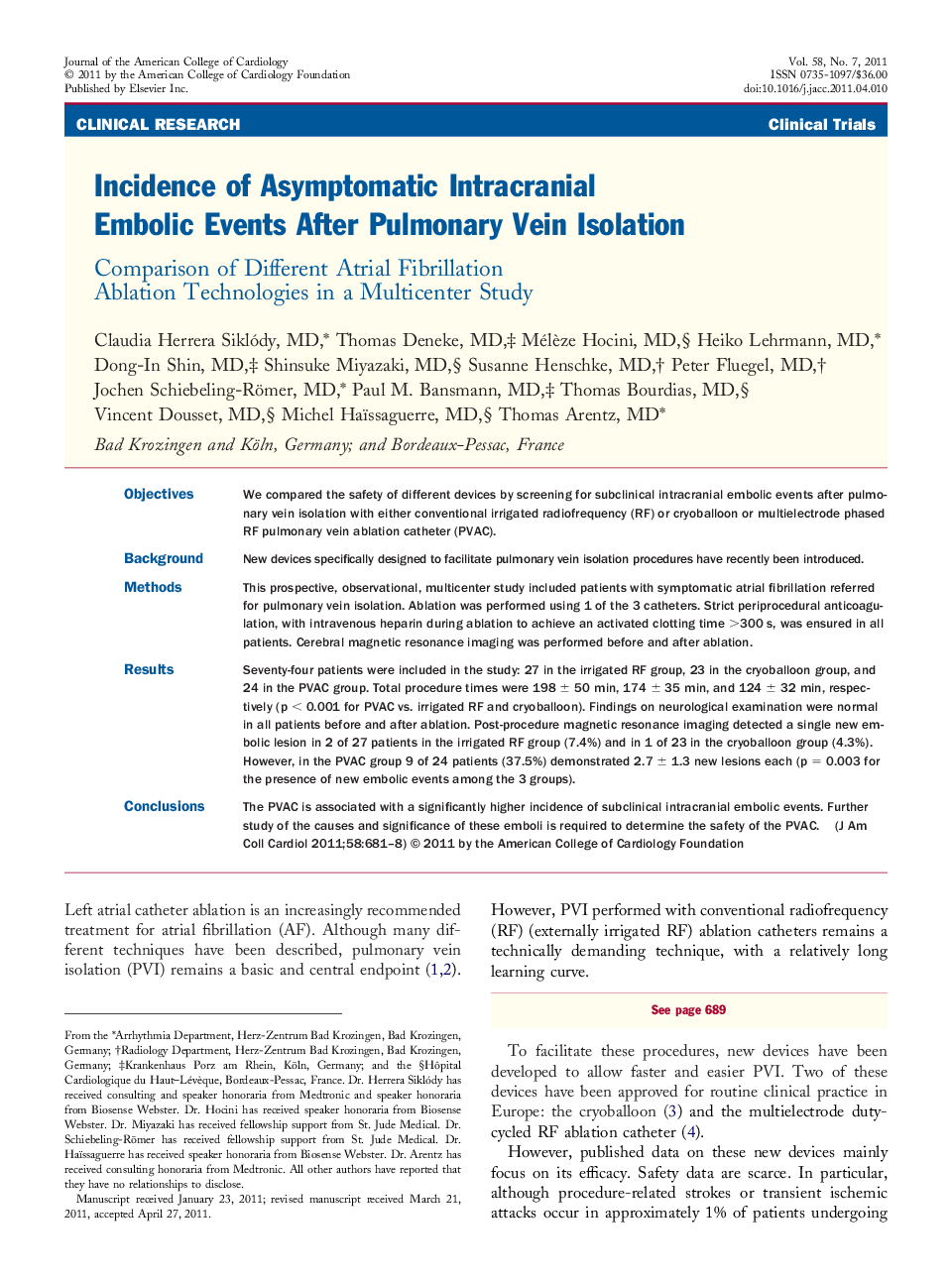| Article ID | Journal | Published Year | Pages | File Type |
|---|---|---|---|---|
| 2948166 | Journal of the American College of Cardiology | 2011 | 8 Pages |
ObjectivesWe compared the safety of different devices by screening for subclinical intracranial embolic events after pulmonary vein isolation with either conventional irrigated radiofrequency (RF) or cryoballoon or multielectrode phased RF pulmonary vein ablation catheter (PVAC).BackgroundNew devices specifically designed to facilitate pulmonary vein isolation procedures have recently been introduced.MethodsThis prospective, observational, multicenter study included patients with symptomatic atrial fibrillation referred for pulmonary vein isolation. Ablation was performed using 1 of the 3 catheters. Strict periprocedural anticoagulation, with intravenous heparin during ablation to achieve an activated clotting time >300 s, was ensured in all patients. Cerebral magnetic resonance imaging was performed before and after ablation.ResultsSeventy-four patients were included in the study: 27 in the irrigated RF group, 23 in the cryoballoon group, and 24 in the PVAC group. Total procedure times were 198 ± 50 min, 174 ± 35 min, and 124 ± 32 min, respectively (p < 0.001 for PVAC vs. irrigated RF and cryoballoon). Findings on neurological examination were normal in all patients before and after ablation. Post-procedure magnetic resonance imaging detected a single new embolic lesion in 2 of 27 patients in the irrigated RF group (7.4%) and in 1 of 23 in the cryoballoon group (4.3%). However, in the PVAC group 9 of 24 patients (37.5%) demonstrated 2.7 ± 1.3 new lesions each (p = 0.003 for the presence of new embolic events among the 3 groups).ConclusionsThe PVAC is associated with a significantly higher incidence of subclinical intracranial embolic events. Further study of the causes and significance of these emboli is required to determine the safety of the PVAC.
